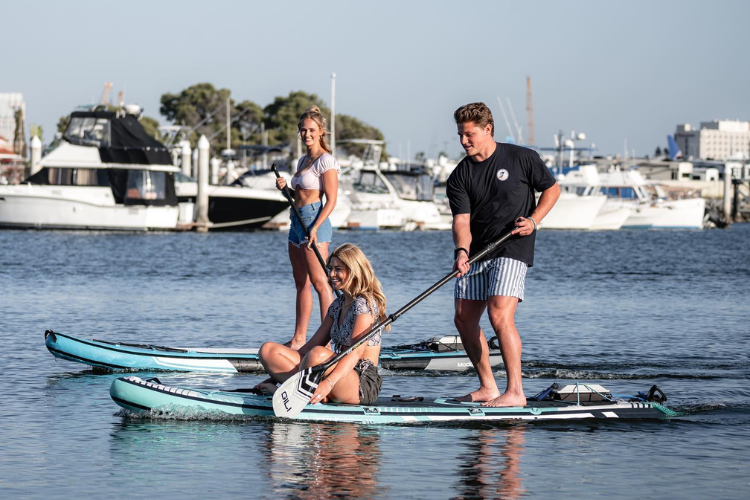
Easy Ways to Make Paddling More Accessible for Beginners
Bixpy CanadaShare
Paddling looks simple from the shore: dip the paddle, pull through the water, and keep moving forward. But anyone who’s ever climbed into a kayak or canoe for the first time knows there’s more to it. Stability, control, and stamina can all feel like challenges in the beginning. The good news is that with a little know-how and the right setup, paddling becomes far more approachable.
Choosing the Right Watercraft
The first step in making paddling easier is selecting the right craft. For absolute beginners, stability should be the top priority. A few options stand out:
-
Recreational Kayaks: Wide and flat-bottomed, they’re designed to be stable in calm lakes and slow-moving rivers. These are forgiving boats for someone just learning the basics.
-
Sit-on-Top Kayaks: Popular for warm-weather paddling, these provide extra stability and are easier to climb back onto if you fall out. They’re also less confining, which can help beginners feel more comfortable.
-
Canoes: Great for families or pairs, canoes allow more space and gear capacity. They’re stable in calm water, though they take a bit more teamwork to handle.
-
Inflatable Kayaks or SUPs: Easy to transport and surprisingly stable, inflatables can be a good option for those without much storage space. Beginners should look for models with multiple air chambers and rigid floors for better performance.
A narrow touring kayak or a performance racing canoe might look sleek, but those are best left for experienced paddlers. Start with something stable, then trade up later if you want more speed or efficiency.
Learning Basic Paddle Technique
Good technique makes paddling less tiring and helps keep the craft moving in a straight line. Beginners can focus on a few basics:
-
Grip: Hold the paddle with hands shoulder-width apart, knuckles aligned with the blade angle. Don’t choke up too close to the shaft center, or you’ll lose leverage.
-
Posture: Sit up straight with feet braced (against foot pegs in a kayak or the bottom of a canoe). This helps transfer power from your core instead of just your arms.
-
Forward Stroke: Plant the blade near your toes, push with your top hand, and pull back past your hip. Rotate your torso with each stroke instead of only using your arms.
-
Switching Sides: To stay straight, alternate strokes every few pulls. In a canoe, one paddler may use a “J-stroke” to correct direction without switching sides.
-
Resting: Beginners often push too hard early on. Find a comfortable rhythm and take short pauses between strokes to avoid burning out.
Practicing these techniques on calm, flat water is the best way to build confidence before tackling wind, current, or waves.
Reducing Barriers with the Right Setup
For new paddlers, fatigue and frustration are the biggest reasons they cut outings short. A few setup adjustments make the experience easier:
-
Seat Comfort: Upgrade the seat or add padding to prevent sore backs and hips. Comfort matters more than beginners realize.
-
Length of Paddle: A paddle that’s too long or too short makes control harder. Kayak paddles should generally match a person’s height and boat width (a 5’8” paddler in a 28” wide kayak typically uses a 220 cm paddle).
-
Safety Gear: Always wear a properly fitted PFD. Having one designed for paddling keeps mobility high.
Adding a Boost for Beginners
Even with good technique, paddling can be tiring for newcomers trying longer trips or fighting wind and current. That’s where a compact electric motor can make the sport more accessible. It gives beginners the confidence to explore without worrying about being too far from shore or not having the stamina to get back. The motor doesn’t replace paddling but supplements it, letting the user decide when to paddle and when to power through.
The Bixpy Canada K-1 Motor was designed for exactly this scenario. It’s lightweight, easy to attach to kayaks, canoes, and inflatables, and provides quiet assistance when beginners need it most. With the K-1, a new paddler can focus on learning technique and enjoying time on the water, knowing they have reliable backup when conditions get tough. To see how the K-1 can help make paddling more approachable for newcomers, explore the full lineup at Bixpy Canada today.


